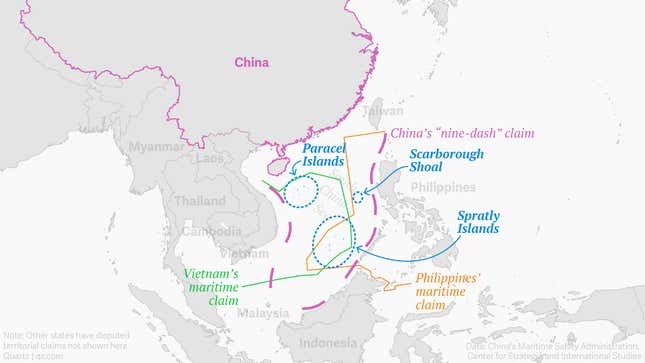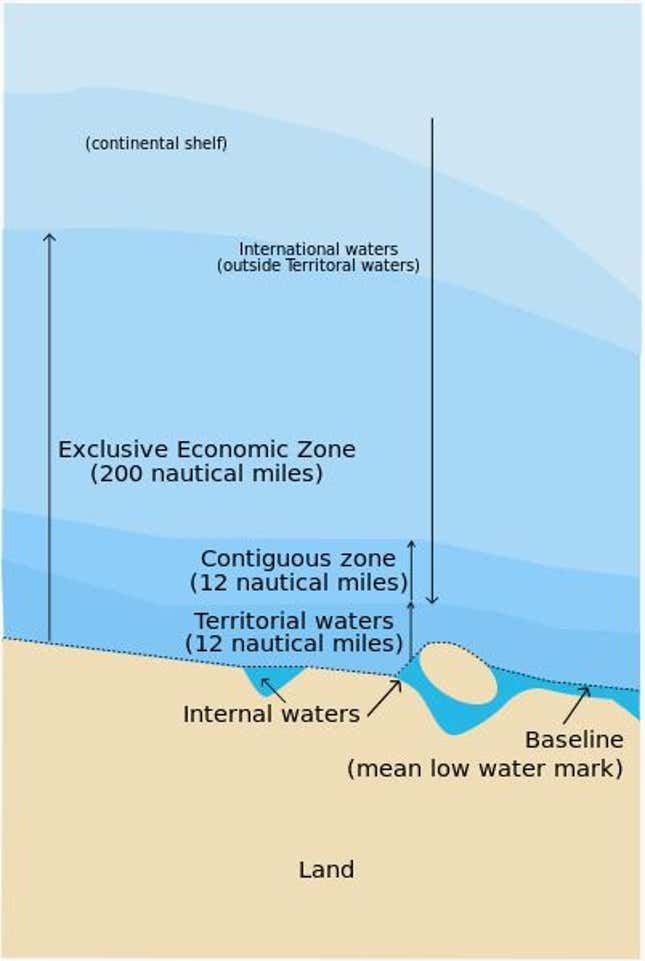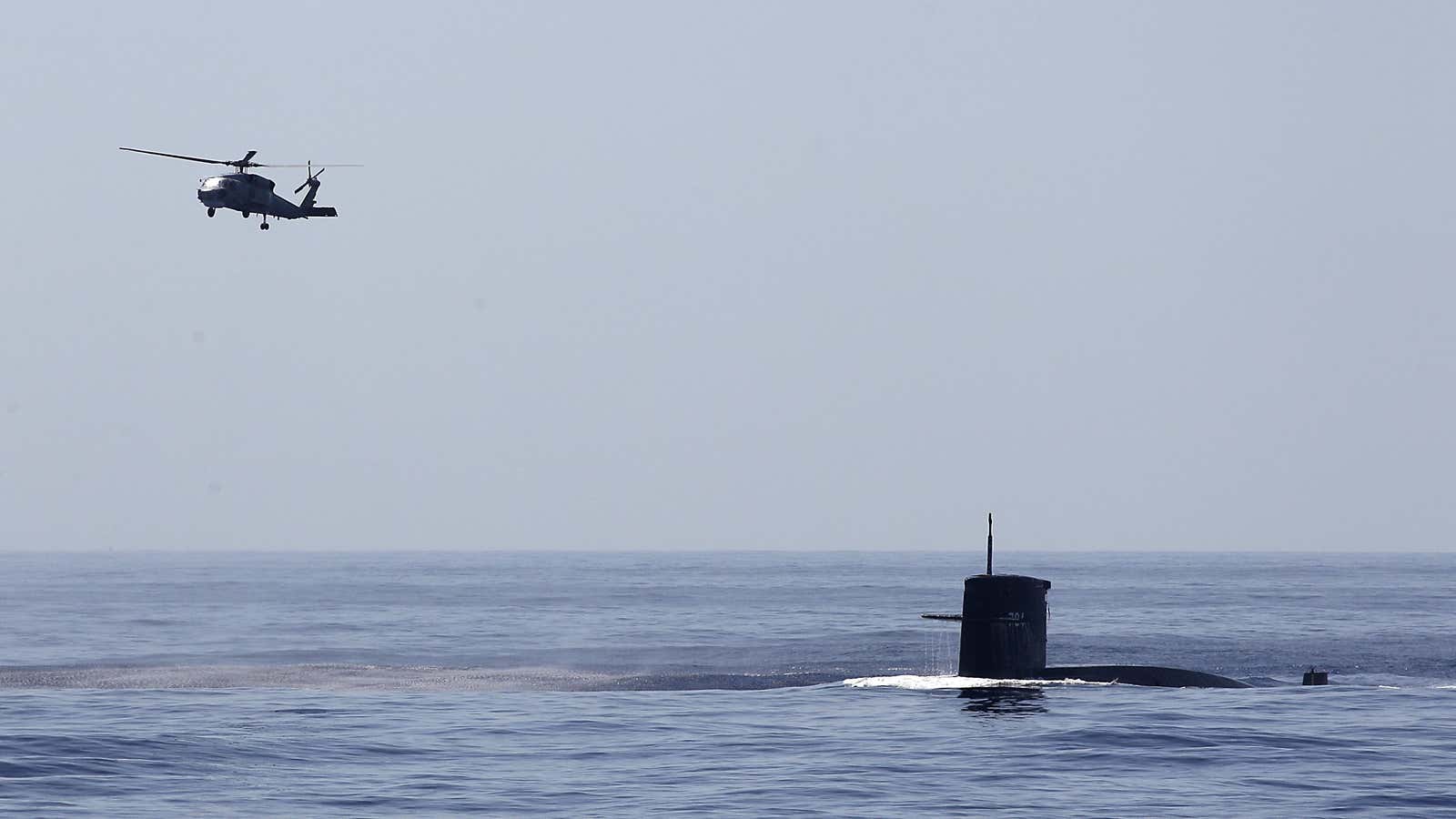Submarines are designed with one primary aim: to travel underwater. But when it comes to foreign vessels operating in the vast waters it claims, China doesn’t much like that idea.
According to state media reports posted last week, Beijing is drafting a revision to the nation’s maritime “traffic safety” law. While in Chinese waters, according to the changes, any foreign submarine would be required to stay surfaced and display its national flag. It would also need to get approval before entering Chinese waters, and report to maritime management authorities. China would reserve the right to bar or expel foreign ships deemed to threaten “traffic safety and order.” Ships entering Chinese waters without approval could be fined more than $70,000.

One big problem: China claims nearly all of the contested South China Sea—with its strategic shipping lanes, rich fishing grounds, and oil and gas deposits—as its own territory, based on its nine-dash line. That claim was shot down last July by an international tribunal ruling under the United Nations Convention on the Law of the Sea (UNCLOS). But Beijing is sticking with it.
Another problem is that what most countries consider international waters, China views more as territorial waters.

Under prevailing international norms laid out by UNCLOS, a country’s territorial sea extends out 12 nautical miles (22 km, 14 miles) from the coast. Here a country is free to set laws and regulate use, though a foreign military vessel can still make “innocent passage” whereby it does nothing threatening and carries on its way.
After that is a contiguous zone (another 12 nautical miles) where a nation can continue setting some laws. Beyond that is the exclusive economic zone (EEZ). Extending out 200 nautical miles (370 km, 230 miles), the EEZ is considered to be international waters under UNCLOS, though within it a nation has sole rights to extract natural resources from the waters (for example, fish) and below the seabed (including oil and natural gas).
China is among a small group of nations that interprets UNCLOS to mean (pdf, p. 16) it can regulate foreign military vessels within its EEZ. Under the proposed rules revisions, foreign submarines would be prohibited from serving their purpose well beyond China’s coastal waters and throughout most of the South China Sea.
“China’s waters are open to foreign ships as long as they do not damage the waters’ safety, order, or China’s sovereignty,” Yang Cuibai, a law professor at Sichuan University, told the Global Times. China, he added, should take the lead in establishing legal order in the Yellow Sea, the East China Sea, and the South China Sea. According to the hawkish tabloid, the revisions will take effect in 2020.
Beijing would likely ignore any international rulings or statements against the new regulations, just as it dismissed the tribunal’s decision last July.
China wouldn’t necessarily enforce its new rules immediately. In 2013, Beijing declared an Air Defense Identification Zone (ADIZ) in the East China Sea, requiring foreign aircraft—even if in international airspace—to identify themselves to Chinese authorities. The country has done little to enforce the ADIZ, but establishing it was an important first step that will make enforcement—when it comes—somewhat easier for Beijing to justify.
Likewise, the proposed submarine rules might go unenforced for years, until they are eventually used as justification for interfering with foreign vessels.
